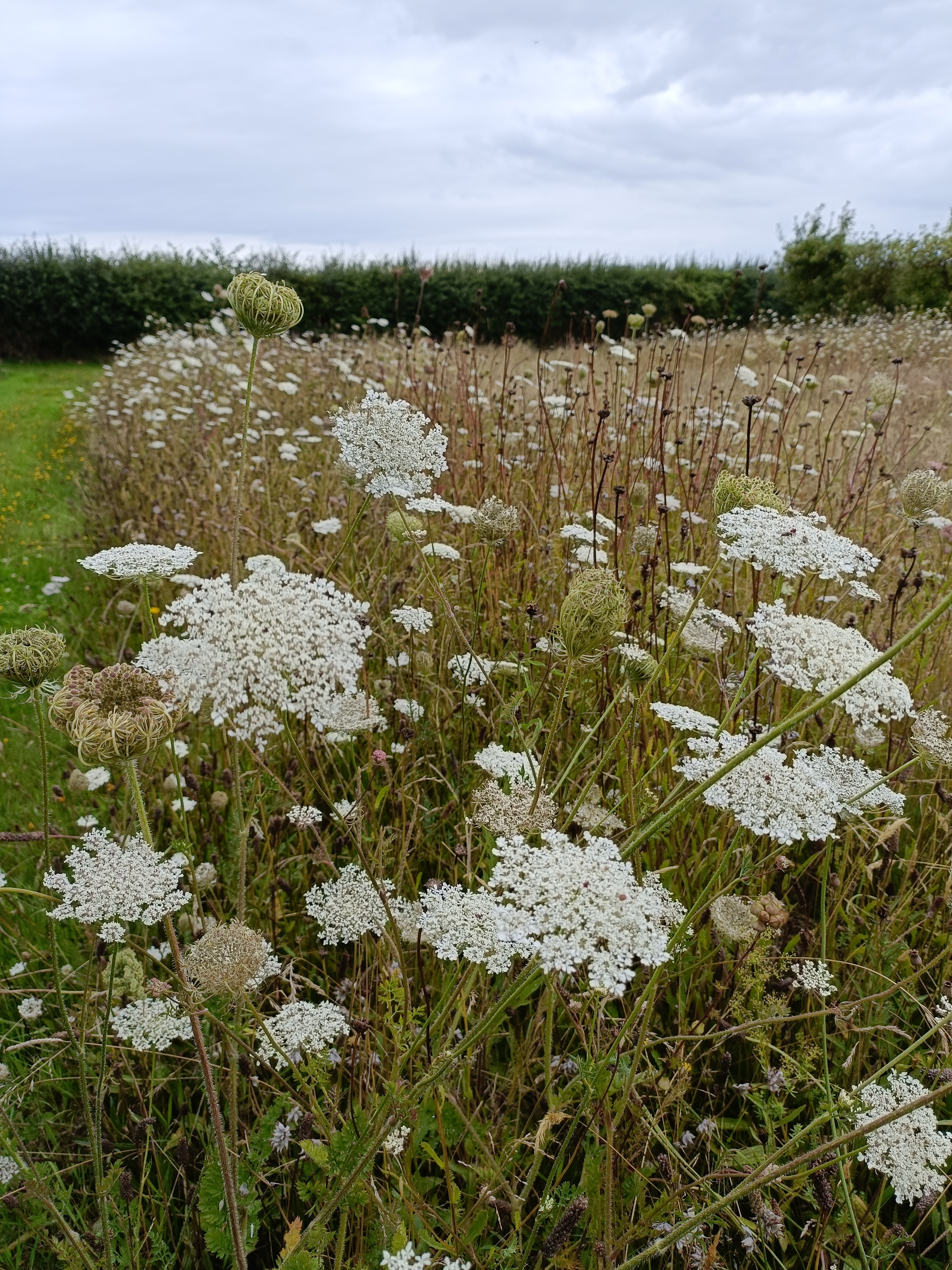National Carrot Day 2024: Carrots and Insects

We’re getting close to the end of the flight season for the main species of insect infesting carrot crops. Whilst the insects will soon stop flying and are unlikely to cause any more damage from now onwards anyway, the impacts of any infestations may not become apparent until the carrots are lifted during the coming months. We have some idea about the impact of infestations; viruses transmitted by willow-carrot aphid in particular have reduced yields by about 50% in untreated control treatments in field trials at Wellesbourne. Even a small number of carrot fly larval mines on carrot roots can reduce quality and thereby yield.
The peak flight period of the willow-carrot aphid was during May this year. A summary of the captures made by the Rothamsted Insect Survey’s network of suction traps can be found here: Cavariella aegopodii (warwick.ac.uk). They are also summarised in the graph. We have developed a day-degree forecast to predict the first flight of willow-carrot aphid: Willow-carrot aphid forecasts 2024 (warwick.ac.uk).

The Insect Survey | Rothamsted Research
We monitor carrot fly routinely at Wellesbourne, partly to back up the forecast predictions but also to provide information for any trials that we’re undertaking. We monitor throughout the year nowadays to get a better understanding of the life cycle.In some winters we catch small numbers of flies quite late in the season, although they are no threat to a crop. This year we moved our traps three times. They started in the carrot plot we had overwintered, then were moved to an area sown in mid-April (late due to the wet weather) and then finally to an area sown in early June, which we will overwinter to maintain the carrot flies over winter. The plots are fairly close to one another, although the flies can take a while to move between them.
We forecast the timing of fly emergence from the pupae in the soil and then egg-laying. The flies take a while between emergence and egg-laying to feed and mate. The graph shows the captures in the different plots and compares them with the forecast pattern of egg-laying and emergence at Wellesbourne. Further information on carrot fly activity can be found here: Monitoring carrot fly at Wellesbourne (warwick.ac.uk) and Carrot fly forecast 2024 (warwick.ac.uk).

Insects and wildflowers
All insects, including pests, play a vital role in the ecosystem – many providing food for other species in the food chain, such as wild birds. This has been a tough year for many insects including some, such as butterflies, that are greatly valued for their appearance and the other ‘ecosystem services’ that they provide. This has been mainly due to a combination of adverse weather conditions affecting their survival Where have all the butterflies gone? - BBC News.
Plants belonging to the Apiaceae, including wild carrot Wild carrot | Kew, are great sources of nectar for a variety of insect species and for example, in one study, were found to be one of the top four species in wildflower mixes visited by wild bees A novel farmland wildflower seed mix attracts a greater abundance and richness of pollinating insects than standard mixes - Nichols - 2023 - Insect Conservation and Diversity - Wiley Online Library. Wild carrot is consequently included in many wildflower seed mixes, including those sown in our biodiversity areas at Wellesbourne.

For more information on vegetable and salad pest activity in 2024 check out the bulletins

